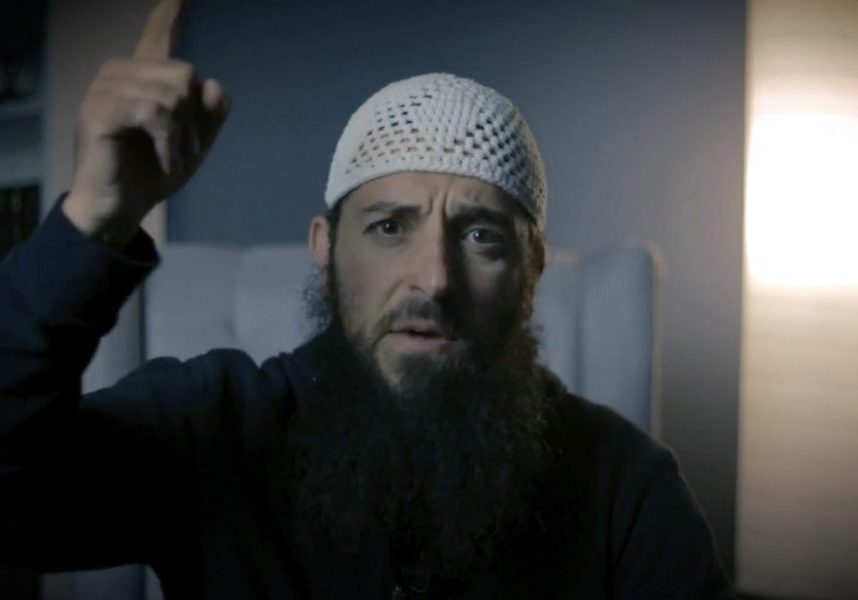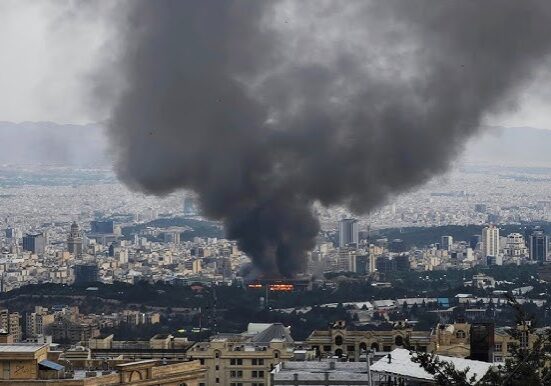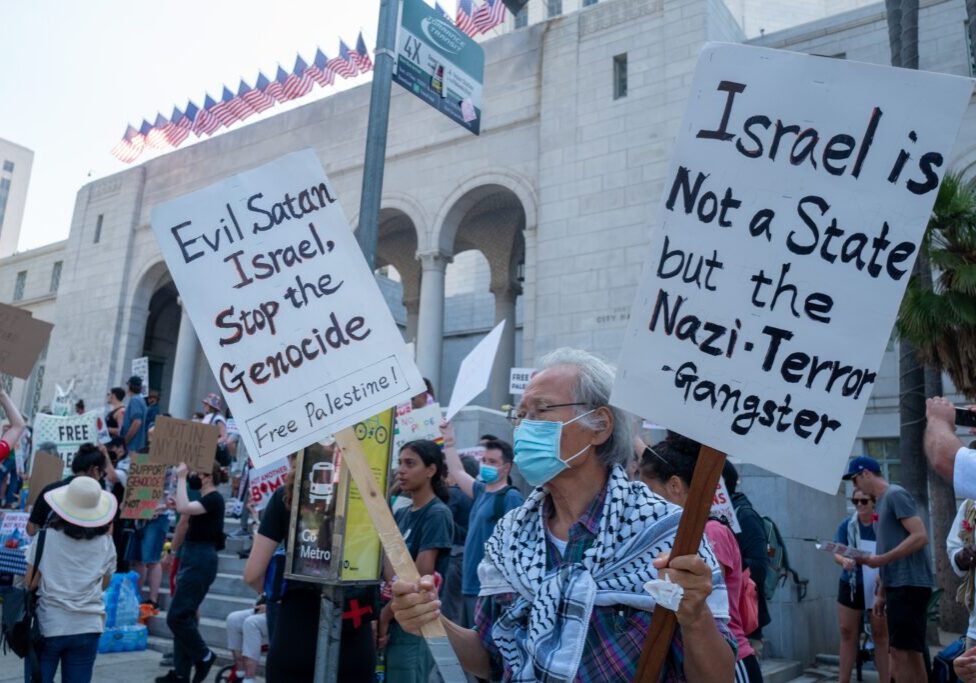Australia/Israel Review
Essay: Still Alive and Kicking
Sep 27, 2018 | Thomas Joscelyn
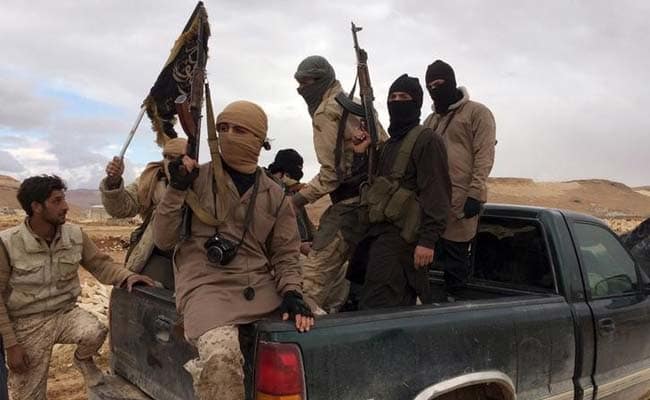
Al-Qaeda remains a threat
On September 11, 2001, 19 of Osama bin Laden’s operatives changed the course of world history. We are fortunate that al-Qaeda hasn’t carried out another 9/11-style attack inside the US in the 17 years since. But that fact shouldn’t obscure the reality about al-Qaeda and its global jihad. Al-Qaeda remains a threat. Its operatives are fighting in more countries around the world today than was the case on 9/11. And its leaders still want to target the United States, its interests and allies – including Australia. The war they started is far from over.
There are many reasons for al-Qaeda’s failure to successfully execute a mass-casualty attack in the United States: America’s defences hardened after 9-11, as its tactical offensive capabilities improved; US counterterrorism and intelligence officials, sometimes aided by allies, hunted down numerous al-Qaeda planners overseas; al-Qaeda’s operatives have also bungled undetected opportunities, proving that even when they get a clear shot, it is difficult to execute mass terror operations on the scale we witnessed in 2001. This is one reason that al-Qaeda began calling for small-scale attacks carried out by individuals.
Al-Qaeda has faced other obstacles as well. In its war with the US, the group has lost key management personnel. Most important, of course, was the death of Osama bin Laden in May 2011. Scores of other senior figures have been killed or captured. This has raised logistical hurdles, disrupting communications and al-Qaeda’s chain of command. In addition, the rise of the Islamic State in 2013 and 2014 created the biggest challenge to al-Qaeda’s authority within the global jihadist movement since its inception in 1988.
Despite all of this, however, al-Qaeda is very much alive – albeit widely misunderstood. Consider this shocking fact: The counterterrorism community still has not formulated a common definition or understanding of the organisation. Basic facts remain in dispute or are actively denied.
With that in mind, let us briefly review the state of al-Qaeda. When we look at the organisation as a whole, it quickly becomes apparent that al-Qaeda has many thousands of fighters around the globe. Indeed, al-Qaeda is waging jihad in far more countries today than it was on 9/11, with loyalists fighting everywhere from west Africa, through north and east Africa, into the heart of the Middle East and into south Asia. Some labour to disconnect the dots on al-Qaeda’s global network, so let us reconnect them.
Al-Qaeda honours Osama bin Laden as the “reviving imam” – an honorific that is intended to emphasise his revolutionary role in spreading the jihadist ideology. Look around the world today, and you see they unfortunately have a point.
Al-Qaeda’s senior leadership

Ayman al Zawahiri: Natural successor to Osama bin Laden
In 2011, Ayman al Zawahiri succeeded Osama bin Laden as al-Qaeda’s global leader. It was a natural move, as Zawahiri had worked closely with Bin Laden since the 1980s. And Zawahiri’s own original organisation, the Egyptian Islamic Jihad (EIJ), provided Bin Laden’s nascent endeavour with key personnel and logistical assistance in the early 1990s. EIJ operatives played crucial roles in the 1998 US Embassy bombings, al-Qaeda’s most devastating attack before 9/11.
EIJ veterans continue to hold some of the most important roles inside al-Qaeda to this day. For example, the UN recently reported that Saif al-Adel and Abdullah Ahmed Abdullah, both of whom are still wanted for their roles in the embassy bombings, are assisting Zawahiri from inside Iran. The two were held by the Iranians for years after the 9/11 attacks, but they resumed their activities in 2015, after al-Qaeda and Iran reportedly agreed to a hostage swap. These “[a]l Qaeda leaders in the Islamic Republic of Iran have grown more prominent, working with” Zawahiri and “projecting his authority more effectively than he could previously,” according to the UN.
This shouldn’t be surprising. The Obama Administration’s Treasury and State Departments revealed in 2011 that al-Qaeda’s Iran-based network serves as the organisation’s “core pipeline through which” it “moves money, facilitators and operatives from across the Middle East to South Asia.” This pipeline operates under an “agreement” between al-Qaeda and the Iranian Government. In the years since the Obama administration first exposed this “secret deal,” the US government has revealed additional details about other al-Qaeda leaders operating inside Iran, including “new generation” figures who were groomed to replace their fallen comrades.
Hamza bin Laden, Osama’s ideological and biological heir, has become a prominent voice for al-Qaeda globally. The group undoubtedly likes to market the Bin Laden name, but this isn’t a mere branding exercise. There is evidence that the junior Bin Laden plays a leadership role within the organisation. He, too, has operated out of Iran.
Al-Qaeda continues to have a significant presence in Afghanistan and Pakistan, and some senior managers are operating in those two countries.
One of the principal reasons the group has been able to weather the America-led counterterrorism storm in south Asia is its relationship with the Taliban. This is perhaps the most underestimated aspect of al-Qaeda’s operations. Following in Bin Laden’s footsteps, Zawahiri has sworn his allegiance to the Taliban’s overall leader, an ideologue known as Hibatullah Akhundzada. And al-Qaeda’s chief goal in south Asia is to resurrect the Taliban’s Islamic Emirate of Afghanistan, which Zawahiri argues is the “nucleus” of a new jihadist caliphate.
Although it is a somewhat awkward arrangement, al-Qaeda’s regional branches ultimately owe their loyalty to Akhundzada as well. Each regional arm is led by an emir who has sworn his allegiance to Zawahiri. Their fealty technically passes through Zawahiri to Akhundzada himself. Although there is little evidence that the Taliban’s hierarchy plays any role in managing al-Qaeda’s presence outside of South Asia, al-Qaeda’s scheme connects Afghanistan to various conflicts around the globe, as Zawahiri’s followers are attempting to build Islamic emirates in several countries.
Al-Qaeda in the Indian Subcontinent (AQIS)
In Sept. 2014, Zawahiri announced the formation of al-Qaeda in the Indian Subcontinent (AQIS), which brought together parts of several pre-existing al-Qaeda-linked groups. AQIS is led by Asim Umar, who is openly loyal to Zawahiri. One of AQIS’s first plots was an audacious attempt to hijack Pakistani frigates and fire their weapons into American and Indian ships.
AQIS’s chief goal is to help the Taliban reconquer Afghanistan. Its fighters are deeply embedded in the Taliban-led insurgency and its role in the Afghan War has been underestimated. For example, in October 2015, the US and its Afghan allies raided two training camps in the southern Shorabak district. According to the US military, one of the two was approximately 77 sq. kilometres in size – making it one of the largest al-Qaeda training camps in post-2001 Afghanistan, if not the largest.
AQIS is attempting to strengthen al-Qaeda’s organisation throughout south Asia, working with groups from Bangladesh, India, Kashmir, Pakistan and likely other countries, too. The Pakistani Taliban is closely allied with al-Qaeda as well.
Al-Qaeda in the Arabian Peninsula (AQAP)
Outside of south Asia, al-Qaeda’s strongest branch is AQAP. Bin Laden’s former aide-de-camp established the current iteration of AQAP in 2009. Today it is led by Qasim al-Raymi, an al-Qaeda veteran who has sworn his fealty to Zawahiri. Raymi is surrounded by other al-Qaeda veterans.
AQAP gained global attention in 2009 and 2010 with its failed attempts to strike inside the US. AQAP simultaneously began promoting the idea of “lone jihad,” an effort that has had some limited success. Several attacks in the US can be traced to this campaign. The Jan. 2015 massacre at Charlie Hebdo’s offices in Paris was AQAP’s doing as well.
AQAP is not just a regional branch of al-Qaeda’s organisation, it has also housed senior management figures responsible for making decisions that affect the jihadists’ global efforts. Its propaganda organs, which have been disrupted, also serve al-Qaeda’s global operations.
AQAP has taken over much of Yemen twice, as it is attempting to build an Islamic state in the country. However, Raymi and his men are currently embroiled in Yemen’s multi-sided war, which pits an Arab-led coalition against the Iranian-backed Houthis. While AQAP has clashed at times with the Arab coalition, the United Arab Emirates and Saudi Arabia have not taken the fight directly to the group on the ground. Instead, AQAP has cut deals to allow its men to live and fight another day. While AQAP has often been on the same side as the Arab coalition, it has also accused the Saudis of assisting the Americans in a targeted air campaign against its leadership.
According to a recent UN report, AQAP may have as many as 6,000 to 7,000 fighters, though it is difficult to estimate the group’s strength for a variety of reasons.
Al-Shabaab in Somalia

Al-Shabaab in east Africa
Based in Somalia, al-Shabaab is al-Qaeda’s branch in east Africa. It is not only responsible for waging a prolific insurgency inside Somalia, but has also launched operations throughout the region. The US is supporting the Somali Government in its attempt to stymie the jihadi insurgents.
Files recovered in Abbottabad, Pakistan show that Osama bin Laden considered al-Shabaab to be a part of his organisation by 2010, at the latest. The reality is that al-Shabaab was already strongly tied to the al-Qaeda network before then. In mid-2010, Bin Laden ordered al-Shabaab’s leader at the time to keep his allegiance private, as the al-Qaeda founder thought a public announcement would further complicate al-Shabaab’s mission in various ways. Some still have not recognised this point, wrongly arguing that bin Laden did not admit al-Shabaab into al-Qaeda’s fold. But this isn’t what the al-Qaeda founder said. Bin Laden simply didn’t want to announce their formal merger to the public.
In early 2012, months after Bin Laden’s death, al-Shabaab and al-Qaeda’s leadership did announce their union. Today the group is led by Abu Ubaydah Ahmad Umar – a man who doesn’t hide his loyalty to Zawahiri and al-Qaeda.
Al-Qaeda in the Islamic Maghreb (AQIM)
AQIM publicly announced its union with al-Qaeda in 2006. And files recovered in Osama bin Laden’s compound show that AQIM regularly communicated with al-Qaeda’s senior leadership in south Asia in the years thereafter. AQIM grew out of an existing jihadist group that was opposed to the Algerian Government. It is led by Abu Musab Abdul Wadoud (a.k.a. Abdelmalek Droukdel), who has sworn his own blood oath to Zawahiri.
AQIM operates in north and west Africa. It is often difficult to measure the scope of its operations, as AQIM’s leaders have decided to hide their roles in various front groups. This has caused confusion in the West. For instance, AQIM clearly backed Ansar al Sharia, one of several al-Qaeda or al-Qaeda-linked groups responsible for the Sept. 11, 2012 attack in Benghazi, Libya. But the US Government was initially reluctant to recognise Ansar al Sharia’s ties to AQIM. Other organisations in Benghazi, Derna and elsewhere in Libya have been tied to AQIM. And AQIM has a small arm in Tunisia that is responsible for carrying out attacks.
In 2012, AQIM and its local jihadist allies took over much of Mali. Their intent was to build an Islamic emirate, or state, which could one day be part of al-Qaeda’s imagined caliphate. They lost their grip on the country after the French invaded in early 2013. But AQIM has continued to operate in north and west Africa since then.
The “Group for the Support of Islam and Muslims” (Jama’at Nusrat al-Islam wal-Muslimin, or JNIM)
JNIM was established in March 2017, bringing together several al-Qaeda groups that were already waging jihad in Mali and west Africa. JNIM is led by Iyad Ag Ghaly, a Tuareg jihadist who has sworn his fealty to Wadoud and Zawahiri, as well as Taliban emir Akhundzada.
Ghaly formerly led an organisation known as Ansar Dine, which was a crucial part of AQIM’s plan for building an Islamic state in Mali. Ansar Dine was folded into JNIM upon its founding.
Today, Ghaly’s men are prolific, targeting local security forces and the French in Mali. JNIM has also built a regional network stretching into the surrounding countries.
Al-Qaeda in Syria
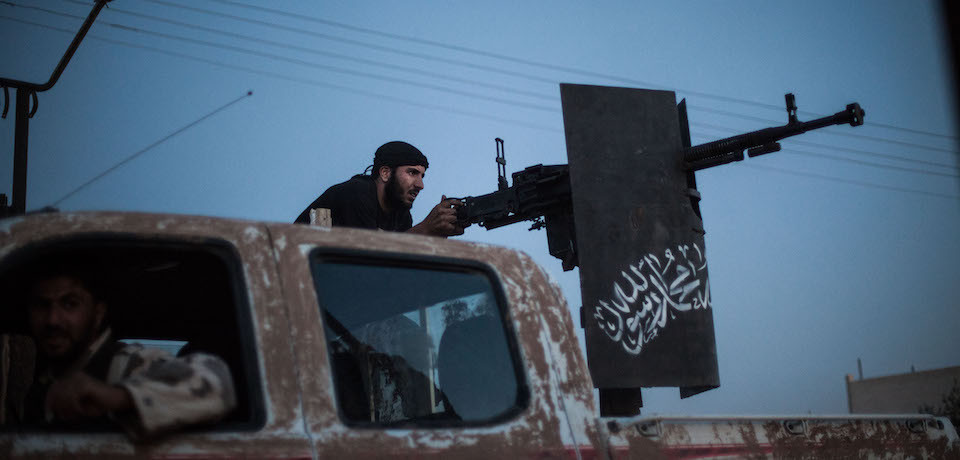
Al-Qaeda in Syria: Multiple factions all swear loyalty to Zawahiri
Until 2016, a group known as Jabhat al-Nusrah was al-Qaeda’s official branch in the Levant. Its leader, Abu Muhammad al-Julani, was publicly loyal to Zawahiri from 2013 to 2016. US officials referred to it as al-Qaeda’s largest arm, with approximately 10,000 fighters, perhaps more.
But in July 2016, Julani announced that his group was rebranding. In January 2017, Julani’s men merged with several other groups to form Hay’at Tahrir al-Sham (HTS), an ostensibly independent organisation. In the months that followed, a controversy over the formation of HTS and Julani’s leadership became heated, leading to fierce infighting. Some al-Qaeda veterans objected to Julani’s moves, claiming that he had broken his oath of fealty to Zawahiri.
Some factions broke off from HTS. A new suspected al-Qaeda group known as the “Guardians of Religion” was established earlier this year. According to a recent UN report, al-Qaeda’s Iran-based leaders were responsible for its founding, as they “influenced events in the Syrian Arab Republic, countering the authority of [HTS’s Julani]…and causing formations, breakaways and mergers of various Al-Qaeda-aligned groups in Idlib.”
Yet, the UN (citing information from its “member states”) reported that “HTS and its components still maintain contact with Al-Qaeda leadership.” The UN added that HTS was recently “reinforced by the arrival of military and explosives experts from al-Qaeda in Afghanistan.”
The UN and the US Government still consider HTS an “affiliate” of al-Qaeda. And Turkey, which has offered protection for HTS in the north-western Syrian province of Idlib, has designated HTS as a terrorist organisation as well, amending its previous designation of Nusrah to include HTS as an alias for the al-Qaeda group.
While there has been a disruption in al-Qaeda’s chain of command in Syria, it is likely that al-Qaeda still maintains a strong cadre of loyalists in the Levant. Even though the situation with HTS is somewhat murky (HTS claims it is no longer part of al Qaeda), there are multiple actors inside Syria who are part of al-Qaeda’s network and loyal to Zawahiri. Another prominent jihadist organisation in Syria, the Turkistan Islamic Party, is also part of al-Qaeda’s web.
The future of al-Qaeda’s presence in Syria will be determined in the weeks and months to come. The Assad regime, Iran and Russia are eyeing Idlib province for a possible large-scale invasion. HTS is the strongest actor in Idlib, and should the jihadists lose their safe haven, or struggle to defend it, Julani’s authority could be further undermined. In any event, al-Qaeda isn’t dead in Syria – whatever the exact truth regarding HTS really is.
Al-Qaeda lives
The US and its allies have failed to defeat al Qaeda. The organisation has survived multiple challenges. Abu Bakr al-Baghdadi’s Islamic State is not the only Sunni jihadist organisation that has fought for territory. From Afghanistan to west Africa, al-Qaeda loyalists are attempting to build their own caliphate. They consider it a long-term project, with multiple obstacles ahead of them.
As al-Qaeda has expanded its geographic footprint, it has placed most of its resources in various insurgencies and wars. Al-Qaeda’s leadership has also deprioritised professional attacks on the West. The group hasn’t attempted to carry out a mass casualty attack in the US or Europe in years.
But that could change at any time. It would then be up to the West’s formidable defences to stop them.
Thomas Joscelyn is a senior fellow at the Foundation for Defence of Democracies and senior editor of FDD’s Long War Journal, a widely read publication dealing with counterterrorism and related issues. © Weekly Standard (www.weeklystandard.com), reprinted by permission, all rights reserved.
Tags: Africa, Islamic Extremism, Middle East, Terrorism

